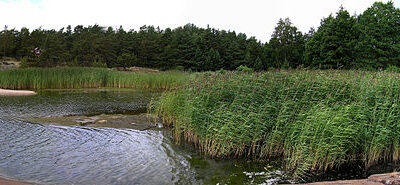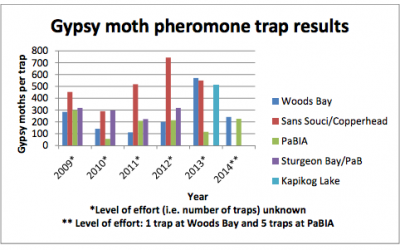Environment
Our deep connection to the bay is rooted in sparkling blue waters, granite shorelines, windswept pines and various other flora and fauna indigenous to our region. Our job is to sustain this connection for future generations through mindful stewardship of our natural environment.
What To Do When You Catch A Tagged Fish
Rob Ludwig of Norwalk, Ohio recently caught a Walleye with an MNR tag on it. In contacting the MNR we got this answer on what to do. “ Over the next two years there will be a substantial number of tagged walleye in the area. We have developed a process for...
Round Goby – History & What You Can Do To Help
The round goby is a small, bottom-dwelling invasive fish. Native to the Black and Caspian seas in Eastern Europe, it was first found in North America in 1990 in the St. Clair River north of Windsor, Ontario. Researchers believe the fish was brought to North America in...
Black Spots On Fish – What Are They and Are They Harmful to You or the Fish?
Black spot is one of the most frequently observed parasites of fish. It appears as small black spots or cysts in the skin, fins and flesh of fish. In the black spot life cycle, fish-eating birds such as herons and kingfishers eat an infected fish. The larval stage,...
How You Clean A Fish May Have An Impact On Contaminant Consumption
We were doing research on how to reduce the consumption of mercury and other contaminants when eating fish and found it interesting that how you clean fish has a big impact. Here is some information you may find interesting. PCBs, pesticides and dioxins concentrate to...
How Old Is This 23.5 Lbs Northern Pike?
In early spring I caught the largest fish of my life up in the bay. It was 43 inches long and weighed 23.5 lbs. During the evening a group had a debate on how old it might be. We did some research and there are many factors but found this interesting study done in...
Low Water Blues – Results of the Mowat Study
The Mowat Centre has released their study on the economic impact of future low water levels in the Great Lakes and St. Lawrence River. The full study can be found here. http://mowatcentre.ca/low-water-blues/
Sturgeon Bay remediation for Bluegreen Algae
PaBIA Remarks to ToA Council 7/18/14 Introduction: Good afternoon, I am Dan Kuhn, President of PaBIA, and I want to thank you for the opportunity to address Council on the issue of Sturgeon Bay remediation for bluegreen algae. But before I do, I would like to be...
Gypsy Moths
An Invasive Species of Potential Concern By Shelagh Grant An invasive species of growing concern in the northeastern United States and southern Ontario is the gypsy moth, which is capable of defoliating huge tracts of deciduous trees, usually resulting in mortality....
Invasive Phragmites
Invasive Phragmites Invasive Phragmites also known as the European Common Reed is an invasive plant that is begining to invade the Great Lakes Region. It is a large aggressive reed which is invading our wetlands and it is capable of outcompeting native species for...
2014 Pheromone Trap Results for the Township of the Archipelago
The Township of the Archipelago has produced a report outlining the results for the Gypsy moth pheromone traps. "Average trap catches in 2013 were 328 moths per trap, while, in 2014, average trap catches were 229 moths per trap. Pointe au Baril Islands Association saw...








